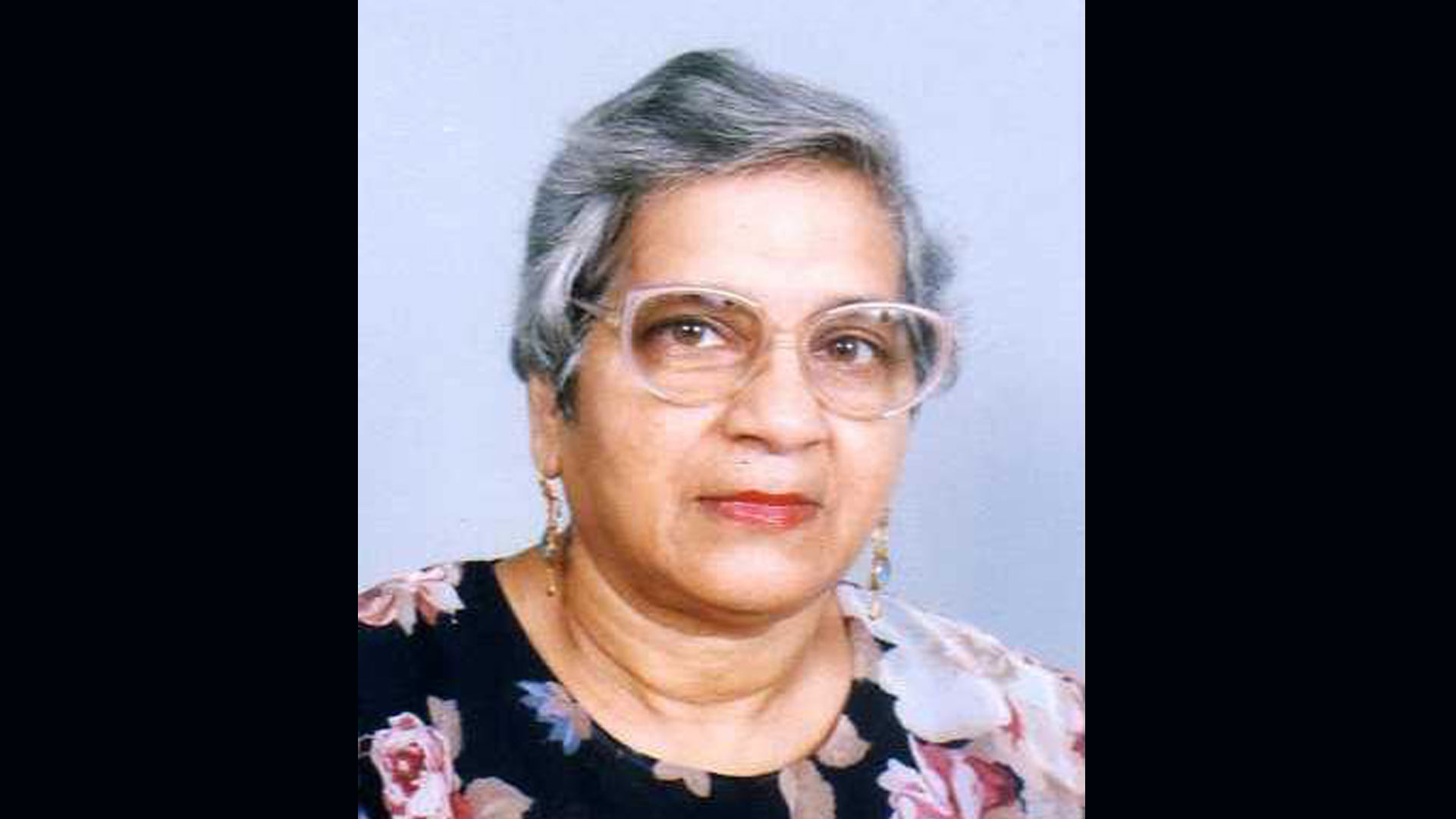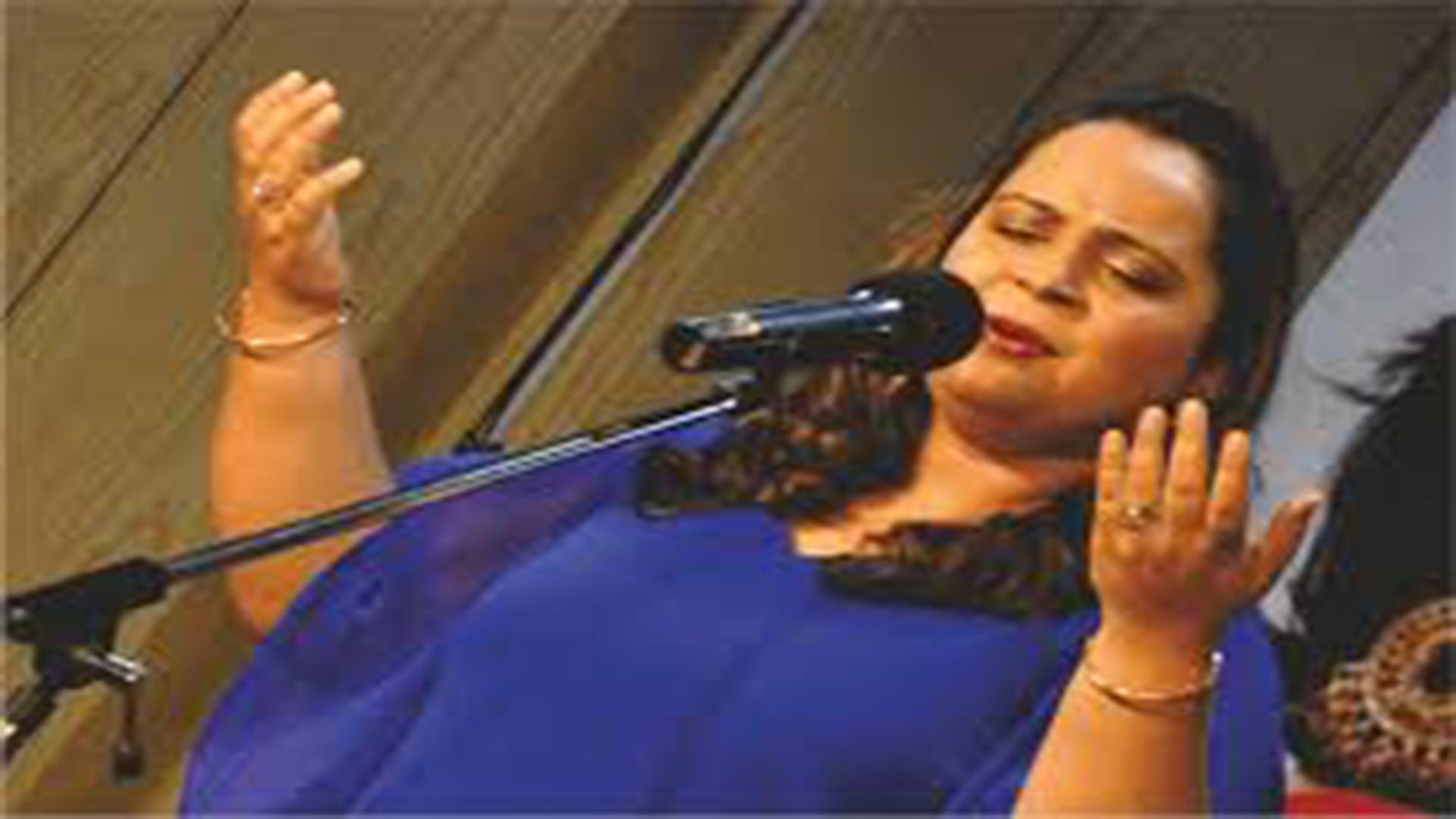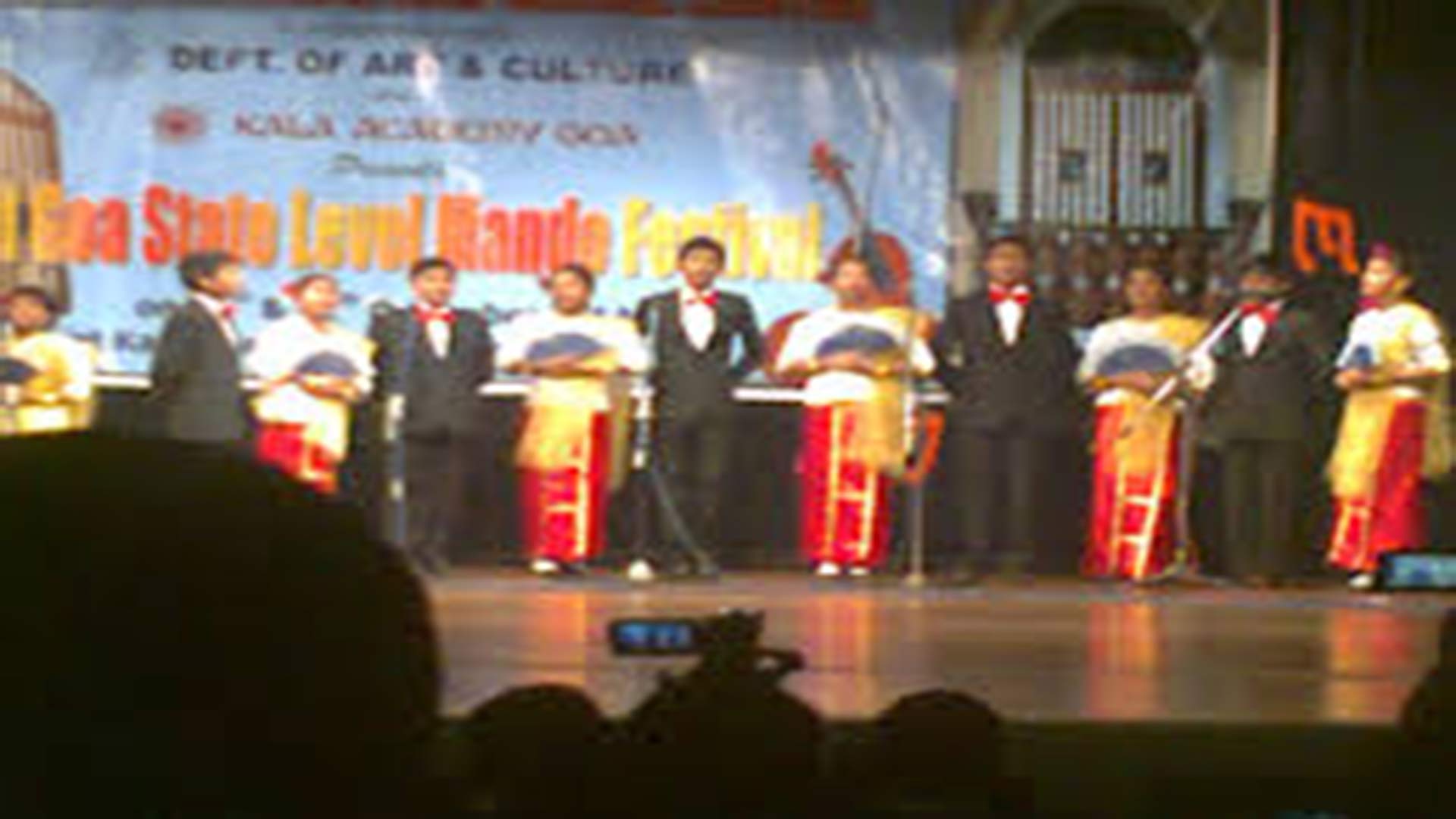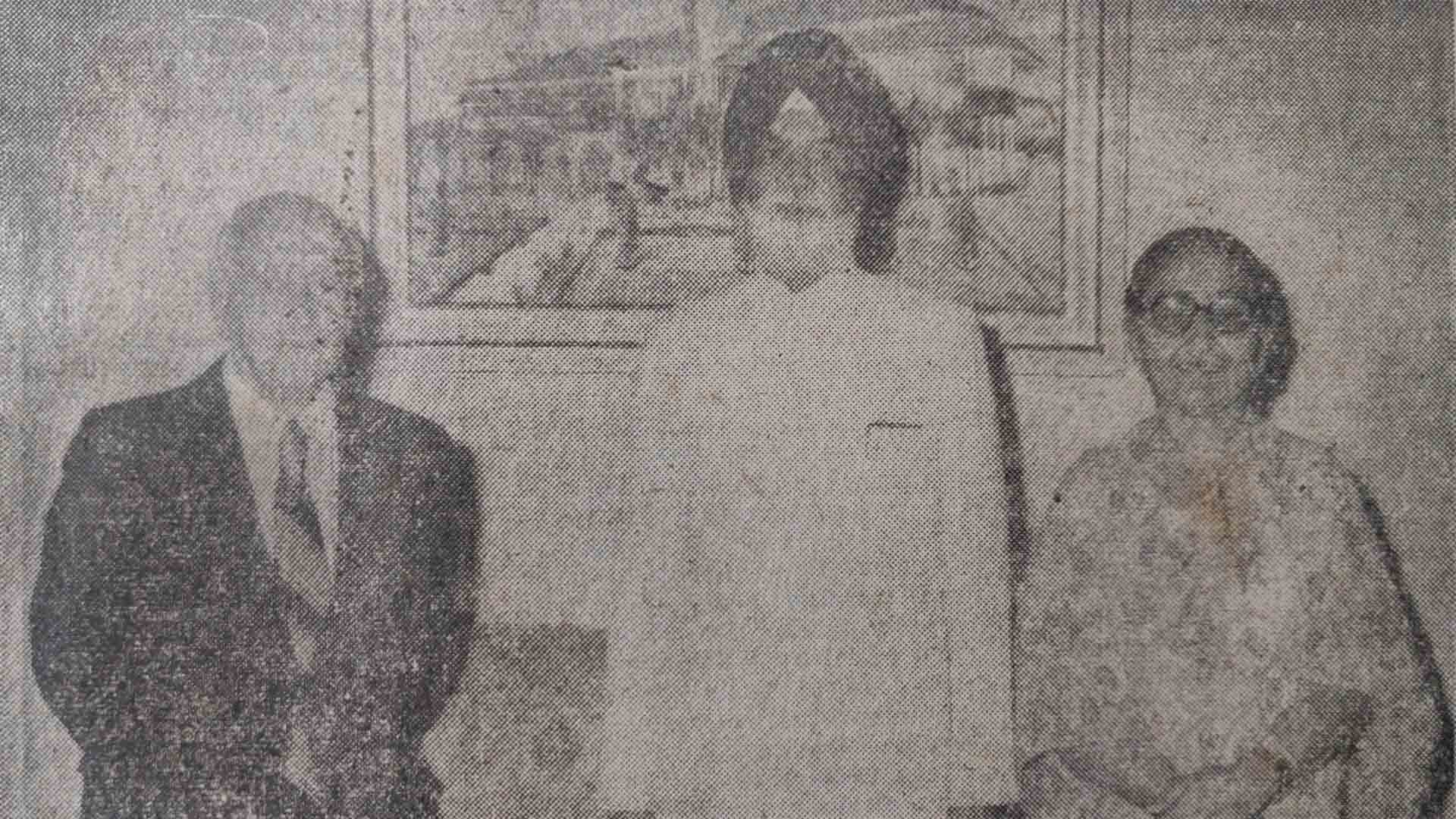Dona Teresinha, as I knew her
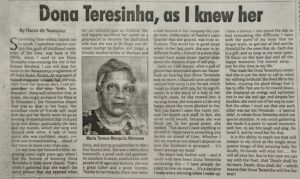
Something from within impels me to speak. I somehow cannot contain this gush of childhood memories of the time, way back in the 1970s, when I used to see Dona Teresinha criss-crossing the city in her Datsun Bluebird. I can still hear her voice in the Renascença programme of All India Radio, Panjim. An exponent of Indo-Portuguese culture that she was, right from her Lyceum days, I can picture her in the play ‘Barco Sem Pescador’. Many will remember that, at times, she singly animated the Mass at St Sebastian’s, the Fontaínhas chapel that was so dear to her heart. Her steadfast circle of friends will recall that she and her family never let go an evening of entertainment that included song and dance, particularly the fado and the mandó, which she sang and danced with verve. A lady of many parts, she was confident, smart, creative and forward-looking… ahead of her times in more ways than one.
Let me now fast forward a little, beginning some eight years ago, when I had the fortune of knowing Dona Teresinha a little more closely. That’s when I gathered that she wasn’t the stern person that she seemed when her car whizzed past us children. She had happily sacrificed her career as a pharmacist to become the dedicated wife that she was to Dr Hugo and devoted mother to Carlos and Jorge, a friendly mother-in-law to Marlene and Silvia, and doting grandmother to their four bouncy kids. She was a meticulous housewife, a good cook and gourmet. An excellent hostess, comfortable with people of all ages and stations, she was a great talker and a good listener. Thanks to her vivacity, there was never a dull moment in her company. Her joie de vivre, emblematic of Panjim’s Latin Quarter that she graced, was truly infectious: This stood her in good stead when, in her last years, she was in indifferent health – indeed in a state that would have some lesser mortal slide down the slippery slope of self-pity.
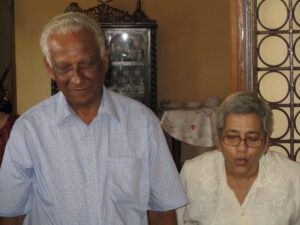
Early on 15th instant, after a pall of gloom had descended upon our household on hearing that Dona Teresinha was no more, I chanced upon an inspirational little story in the Herald, which I wish to share with you for its significance. It is the story of a lady in her twilight years. As she moved into a nursing home, she was seen to be very happy about the room allotted to her. ‘But you haven’t seen the room yet,’ said the health care staff. In fact, she never really would, because she was blind; yet, in her good poise, she replied, ‘That doesn’t have anything to do with it. Happiness is something you decide on ahead of time. Whether I like my room or not doesn’t depend on how the furniture is arranged… it’s how I arrange my mind.’
The brave lady further said – and it could well have been Dona Teresinha exclaiming this – ‘I have already decided to love my room… it’s a decision I make every morning when I wake up. I have a choice: I can spend the day in bed recounting the difficulty I have with the parts of my body that no longer work, or get out of bed and be thankful for the ones that do. Each day is a gift, and as long as my eyes open, I’ll focus on the new day and all the happy moments I’ve stored away… just for this time in my life.’
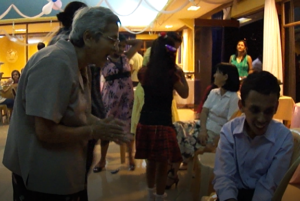
That reads like Dona Teresinha’s credo! And this is just the time to call to mind her edifying fortitude! She lived life to the fullest, enjoying the good things that it has to offer. Not one to be cowed down, she displayed an energy and optimism rare in our day and age; and despite her troubles, she went out of her way to comfort the other. I must say that one such other was our son Fernando – a ‘special child’, to whom Dona Teresinha doled out special attention. At any social gathering she made it a point to spend moments with him, to see him laugh and sing. He loved it, and he loved her for that.
It is this ability to reach out that will remain in my mind as the single most potent image of this amazing lady. No doubt, Fernando will miss her…. We will all miss her. But in her case we can say with the Poet, that ‘Death shall be no more. Death, thou shalt die’ – which means that Dona Teresinha will live forever!
(Herald, 25 April 2010)
Sonia - The Fado's New Fate
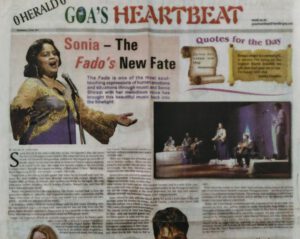
Sonia Shirsat is the Fado’s Lady Fate in Goa. On Valentine’s Day she swore her love for Portugal’s iconic melody. That the song has come to stay became obvious from the near-full Dinanath Mangueshkar auditorium that lapped up every bit of Mundo Fado II, Sonia’s first solo show on home turf.
Sonia’s voice is extremely well suited to the fado. Her talent first became evident at the ‘Vem Cantar’ contest (2002), through her superb rendering of Madre Deus’ ‘O Pastor’. Before long, ‘Barco Negro’’ sung by her also became a people’s favourite. And this time, a bright new ship – ‘M. V. Mundo Fado’, if you like! – dropped anchor in Panjim, from where it will again sail the Seven Seas.
Impressive is the line-up of fado greats that Sonia has performed with over the years. But more fulfilling must have been her own first solo concert, Mundo Fado, held in 2008, at Museu do Oriente, close to Alcântara docks, by the Tagus. She sang to a packed house, with guest artistes including Mestre António Chaínho, Manuel Leão, and Casa de Goa’s musical troupe, Ekvat!
Notice the poetry of that fabulous setting: the Orient, harking back to Goa; the proverbial waterfront, where the Fado originated amidst a sailor community; and the Tagus, from where all those intrepid ships once sailed “o’er seas hitherto not navigated… to seek out new parts of the world”….
So it was at Alcântara (‘the bridge’, in Arabic) that Sonia crafted her musical bridge with the fado world. Climbing onto the international stage is no mean task, especially for one not fully born into the genre. Sonia chose to cultivate it, chaperoned by her Lusophile mother Maria Alice Pinho, who belongs to a Goan generation raised on Portuguese music.
Mundo Fado II started off with an evocative instrumental medley by Sonia’s main accompanists, Flávio Teixeira Cardoso (Portuguese Guitar) and Pedro Miguel Soares Marreiros (Spanish Guitar) from Portugal. While they were at it, in walked Sonia draped in a designer gown and shawl. The backdrop was a quiet, understated, white with colour focus lights. Her first song was ‘Cansaço’ (‘Weariness’)… but needless to say both audience and artiste were zestful until the end!
There was a happy mix of familiar and not-so-familiar numbers. ‘Alfama’ (a tribute to Hotel Cidade de Goa’s restaurant of the same name where she is the lead artiste at the monthly ‘Noite de Fado’) was followed by ‘Amor de Mel’, Fado das Horas’, ‘Tive um Coração’, ‘Meu Amor Marinheiro’ and ‘Zanguei-me com o meu Amor’, among others.
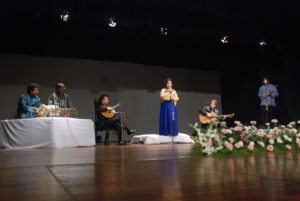
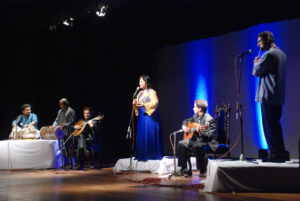
Sonia’s show was marked by measured stylistic innovation. It featured the tabla (Mayuresh Dattaram Vasta), the flute (Marwino António da Costa) and the dhol (Santosh Sawant). And in a style all her own, the vocalist had none of that over-the-top emotionality of the Portuguese fadistas, nor did the tempo quicken as the show progressed; but she sang with passion, offering personal and historical snippets in her announcements.
Sonia infused the fado with new blood, giving the genre a fresh lease of life, and perhaps scope for another to emerge (in a Goan tradition of give and take, which people of good will must endorse). ‘Rua do Capelão’, a ‘modern fado Severa’, with flute and guitars, was a tribute to Maria Severa, 19th century Portugal’s best-known fadista. The popular ‘Cartas de Amor’ was backed by flute, tabla and Spanish guitar; and ‘Ave Maria Fadista’ by tabla and the guitars. It was most fascinating to see the Indian instrumentalists gel with their Portuguese counterparts in ‘Barco Negro’. The latter also took to ‘Doreachea Lharari’ and ‘Adeus Korcho Vellu Pavlo’ as fish to water.
Sonia hailed the mandó as ‘Goa’s fado’! And curiously, hiding behind the Konkani title of our best-known farewell song were Portuguese lyrics – the labour of love of a suave Goa enthusiast Manuel Bobone. The ensuing musical dialogue symbolised a confluence of the past and the future; and its melody is an apt signature tune for Sonia’s Luso-Goan musical experiment.
Mundo Fado II unwittingly commemorated the centenary of the modern fado, first recorded in 1910. And, putting behind its nearly five-decade long hiatus in Goa, Sonia gave a clarion call to young fado singers Danika da Silva Pereira, Manuela Lobo and Efigénia de Santana Miranda to rise to the occasion. She also expressed her camaraderie by inviting guest artistes Carlos Manuel Meneses and Allan Abreu (both Spanish Guitar), Daryl Coelho (Mandolin) and Franz Schubert Cotta (Portuguese Guitar) to be on stage with her. And early in the show, she recalled the musical moments shared with Orlando de Noronha and Dinesh K., both of whom couldn’t make it that day….
That’s ‘Team Sonia’ for you, poised to carve out a brilliant new fate for the Fado in Goa!

(Herald, Goa’s Heartbeat, 23 Mar 2011)
Mando Moments
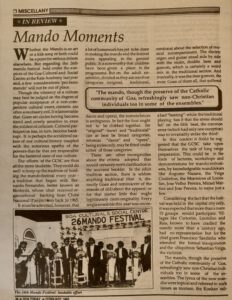
Whether the Mando is an art or a folk song or both could be a point for serious debate elsewhere. But regarding the 26th mando festival held under the auspices of the Goa Cultural and Social Centre (GCSC) at the Kala Academy last year end, a few considerations 'pro bono mando' will not be out of place.
Though the vibrancy of a culture may best be judged on the degree of popular acceptance of a non-competitive cultural event, contests are often a necessary evil. It is lamentable that Goan art circles having become timid and overly sensitive to even the mildest of criticism. Cultural participation has in turn become bankrupt. It is perhaps the accidental nature of our cultural history coupled with the notorious apathy of the powers-that-be that are responsible for the battered state of our culture.
The efforts of the GCSC are thus all the more laudable. They could do well to keep up the tradition of holding the mando festival every year – a tradition that began with Bernardo Fernandes, better known as Benferds, whose ideal received organisational backing from Clube Nacional (Panjim) way back in 1965.
It must be admitted, however, that a lot of homework has yet to be done in making the mando and the festival more appealing to the general public. It is noteworthy that children have been given a place in the programme. But on the adult ensembles, divided as they are into four categories (original, traditional, dance and opera), the nomenclature is ambiguous. In fact, the four ought not to be clubbed together, for "original" (new) and "traditional" can at best be broad categories, whereas "dance" and "opera", being styles only, may be fitted under either of those categories.
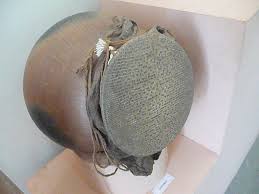
There are other incongruities about the criteria adopted that would certainly merit clarification in the souvenir booklet. In the adult tradition section, there is seldom anything traditional (that is, distinctly Goan and reminiscent of the mando of old) about the apparel; or for that matter little that might legitimately claim originality. Every single ensemble this year was unconventional about the selection of musical accompaniment. The electric organ and guitar stood side by side with the violin, double bass and gumott, which is certainly a weird mix in the traditional section. And ironically, it was the dear gumott, the most Goan of them all, that suffered a bad "beating": while the traditional playing has it that the stress should fall on the fifth beat, the common error (which had only one exception) was invariably to strike the third!
In this context it could be suggested that the GCSC take upon themselves the task of long range preparation. This could be in the form of lectures, workshops and demonstrations for mando enthusiasts, by knowledgeable manddekars like Augusto Nazaré, the Veiga Coutinhos, the Monteiros of Loutulim, José Velho Pereira, Micael Martins and José Pereira, to name just a few.
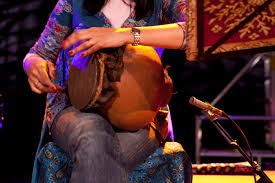
Considering the fact that the festival was held in the capital city only, it was expected that more than a mere 15 groups would participate. Villages like Curtorim, Loutulim and Raia, known to have cradled the mando more than a century ago, had no representation but for the chief guest Francisco Sardinha who attended the formal inauguration, and the ubiquitous Sebastião Veiga, the violinist.
The mando, though the preserve of the Catholic community of Goa, refreshingly saw non-Christian individuals too in some of the ensembles. The lyrics of the new mandos were topical and referred to such issues as tourism, the Konkan railway, drug addiction, unemployment, crime and the Konkani language. That the mando is a love song was spicily highlighted by the compere with his inimitable brand of jokes. At least two groups in the original category pinched the music of some well-known dulpods – an affront to all manddekars in the audience, and which should have fetched them a disqualification.
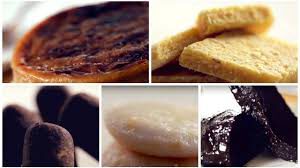
To enhance the festival spirit, is would certain pay to recreate the olden ambience of the mando, not only on stage but outside it. For instance, Goan sweets and delicacies could be made available during the intermission. To foster a greater involvement of the audience, a traditional dress contest could be held in the auditorium itself. Finally, in an effort to popularise literature and audio-visual material on the mando, the works of Agapito de Miranda, Antscher Lobo, Lúcio Rodrigues, Lourdino Barreto, José Pereira and Micael Martins could be exhibited and sold. This would mean a service to the general public and a fitting tribute to the past and present masters of the mando.
(Goa Today, February 1993)
Our Honoured Guest
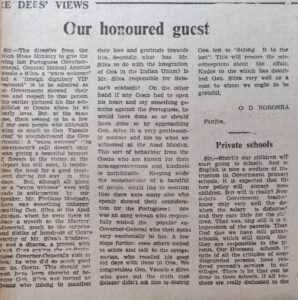
The directive from the Union Home Ministry to give the loving last Portuguese Governor-General, General Manuel Antonio Vassalo e Silva, a “warm welcome” and a “foreign dignitary VIP treatment” is to be admired as the Government showed their love and respect to that person who earlier pictured his fine sensibilities to Goans whom he so dearly loves.
But, at the same time, there seemed to be a few of our own people who although owing so much to Gen. Vassalo tried to misunderstand the Government: A “warm welcome” (the Government’s call) doesn’t only mean giving a beautiful bouquet of flowers to the visitor at the airport but still more, it emphasizes the need for a good treatment during his stay in this place.
Although all plans for a “warm welcome” were made well in anticipation by our Speaker, Mr Froilano Machado, there was something unhappy awaiting Gen. Silva at the Azad Maidan, when he went there to place a wreath at the Martyrs’ Memorial, much to the surprise and dislike of hundreds of Goans worthy of Mr Silva’s kindness: it was a dharna, a protest with black flags against the ex-Portuguese Governor-General’s visit to Goa; he who did so much good for us Goans. That should not even have been thought of because Gen. Silva was invited by Goans who intend to manifest their love and gratitude towards him. Secondly, what has Mr Silva to do with the integration of Goa into the Indian Union? Is Mr Silva responsible for Salazar’s misdeeds?
On the other hand, if any Goan had to open his heart and say something genuine against the Portuguese he would have done so or should have done so by approaching Gen. Silva in a very gentlemanly manner and not by what we witnessed at the Azad Maidan. This sort of behaviour from the Goans who are known for their non-aggressiveness and kindness is unthinkable.
Keeping aside the misbehaviour of a handful of people, I would like to mention that there were many also who openly showed their consideration for the Portuguese: one was an aged woman who respectfully wished the popular ex-Governor-General who then spoke very emotionally to her. A few steps further, some others waited to salute and talk to the octogenarian, who recalled his good old days with them in Goa.
We congratulate Gen. Vassalo e Silva who gave out the truth that Salazar didn’t ask him to destroy but to “defend it to the last”. This will remove the misconceptions about the affair.
Kudos to the editorial which has described Gen. Silva very well as a man to whom we ought to be grateful.
(Letter to the editor, The Navhind Times, Panjim, 12 June 1980, p. 2)
